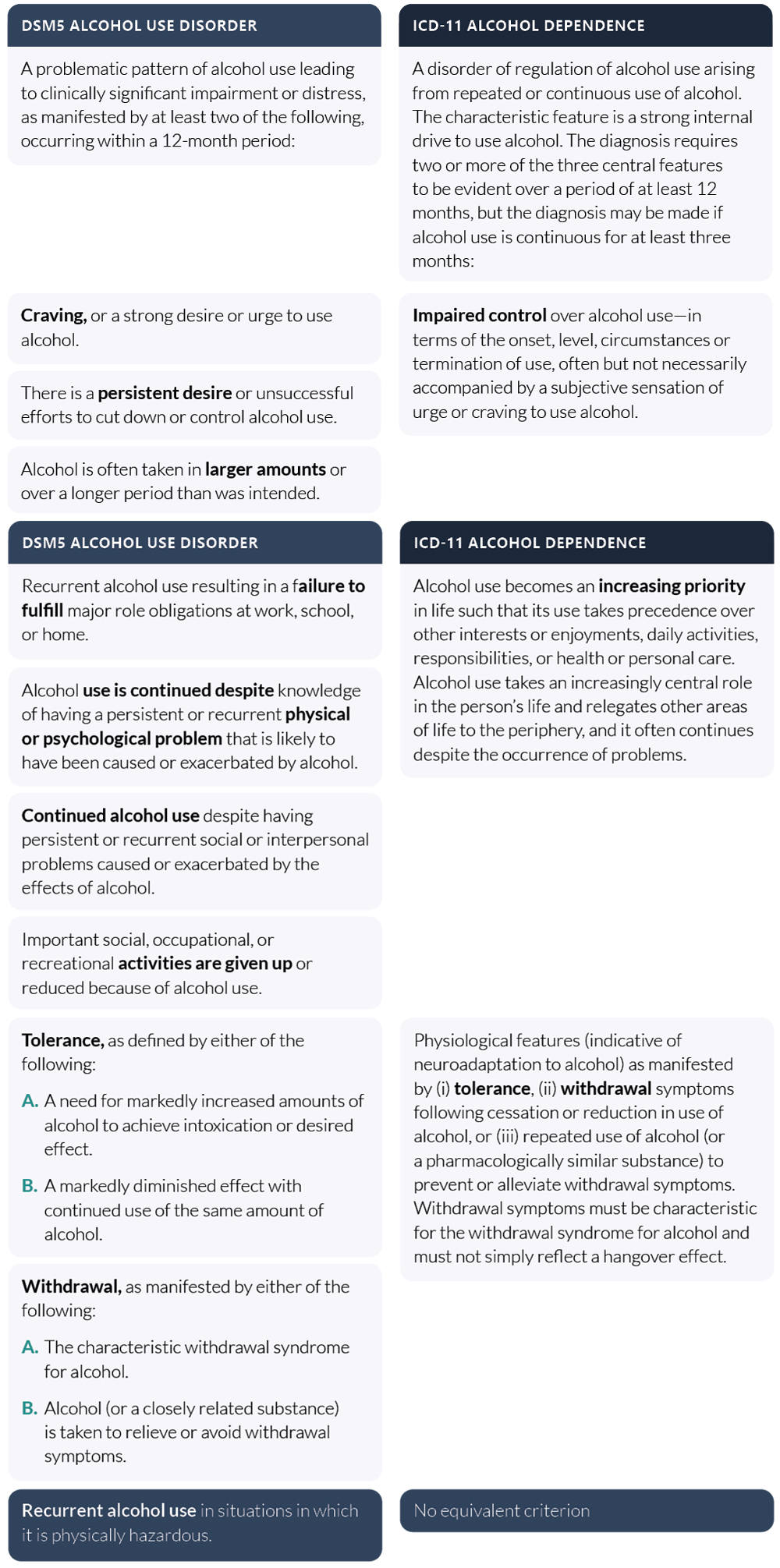Assessing Dependence
When assessing the patient’s dependence on alcohol and the related harms that may be experienced, clinicians should examine:
-
-
the severity of dependence
-
the consequences of drinking
-
previous experiences of abstinence and treatment.
The measurement of the degree to which a person is dependent upon alcohol allows the clinician to plan treatment goals and interventions. The severity of dependence provides an indication of the risk of withdrawal and might also provide some initial indication of how intense the treatment program needs to be. For example, a person who is more alcohol dependent may be less able to achieve controlled drinking. In addition, medications for relapse-prevention (“alcohol pharmacotherapies”) are aimed at those with alcohol dependence and have been trialled on such patients; they may be inappropriate (and are likely to be untested) on those with non-dependent unhealthy alcohol use.
FIGURE 4.3: Diagnostic Criteria for Alcohol Dependence and Alcohol Use Disorder in DSM-5 and ICD-11

| Adapted and updated from Saunders JB, Degenhardt L, Reed GM and Poznyak V. Alcohol use disorders in ICD-11: past, present and future. Alcoholism: Clinical and Experimental Research 2019; 43: 1617-1631. DSM is the Diagnostic and Statistical Manual by the American Psychiatric Association (APA). ICD is the International Statistical Classification of Diseases by the World Health Organisation (WHO). Note: Words in Bold indicate the key points of each criterion. In DSM-5 the diagnosis of substance use disorder is further classified according to severity: Presence of 2-3 symptoms: mild; presence of 4-5 symptoms: moderate; presence of 6 or more symptoms: severe. |
Explore the patient’s experiences of dependence, tolerance and withdrawal by asking the patient to describe the last two or three occasions on which they reached intoxication and the last two or three occasions when they did not become intoxicated. (Assessment of withdrawal is discussed in Chapter 8).
Three of the several validated questionnaires that measure alcohol dependence are included in the Appendix, as are the shortened version of the Severity of Alcohol Dependence Questionnaire (SADQ-C), the Short Alcohol Dependence Data (SADD) questionnaire, the Severity of Dependence Scale (SDS) and the Alcohol Dependence Scale (ADS) (see also Review of the Evidence for information on the latter two). These questionnaires can either serve as a checklist to help organise the clinician’s questions or the patient can complete them during assessment.